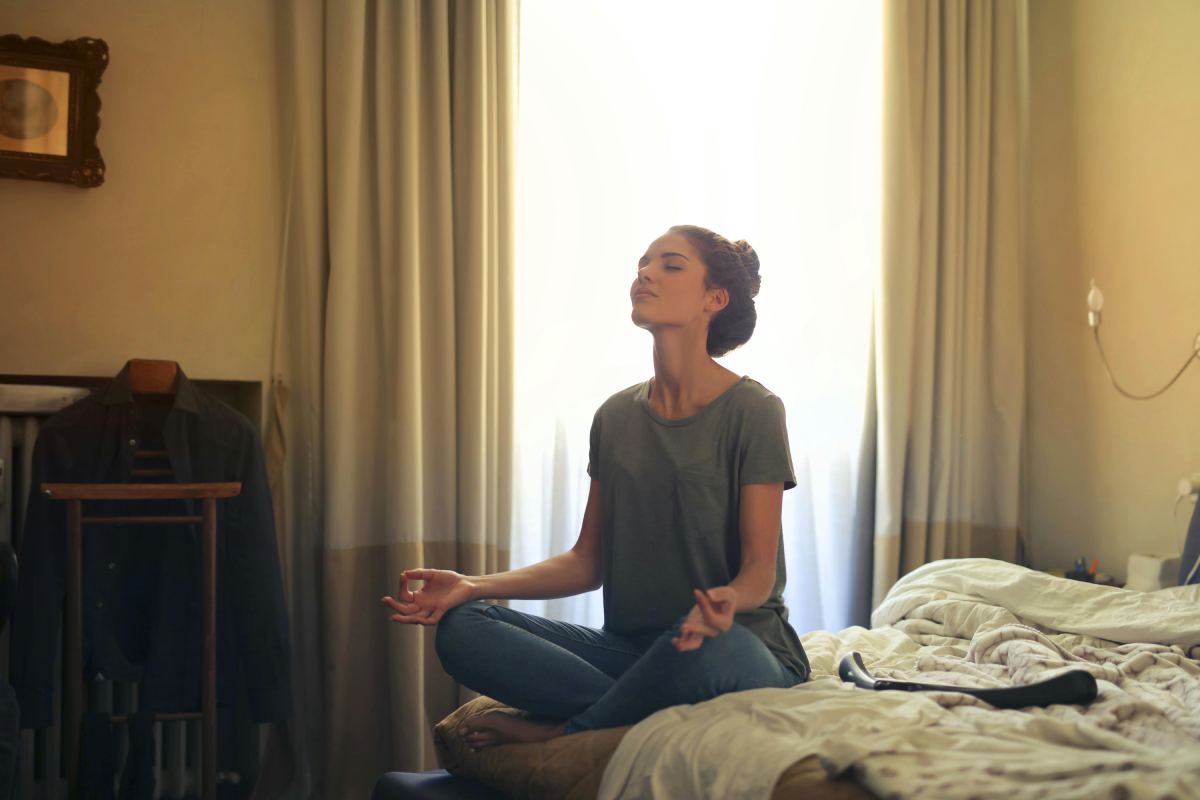Introduction
Meditation is more than just sitting quietly—it’s a practice that can help you find calm, clarity, and resilience in a fast-paced world. Whether you’re a university student, a young professional, or someone navigating midlife, meditation offers a universal path to well-being. But to truly benefit, it helps to follow a handful of simple, time-tested rules. This guide breaks down the 8 essential rules of meditation, making it easy for anyone, anywhere, to get started and stick with the practice.
Why Meditation Matters
- Universal Appeal:
Meditation is practiced in every corner of the world. From busy cities to quiet villages, people turn to meditation for a sense of peace and balance. - Science-Backed Benefits:
Research shows meditation can reduce stress, improve focus, and help you manage emotions more effectively. - Fits Any Lifestyle:
You don’t need special equipment or hours of free time—just a few minutes and a willingness to try.
The 8 Essential Rules of Meditation
1. Find Your Comfortable Posture
- Why it matters:
A comfortable position helps you relax without falling asleep and prevents aches that can distract you. - How to do it:
- Sit on a chair, cushion, or floor—whatever feels natural.
- Keep your back straight but not stiff.
- Let your hands rest on your lap or knees.
- Relax your shoulders and jaw.
- Tip:
Lying down is fine if sitting is uncomfortable, but be aware you might get sleepy.
2. Focus on Your Breath
- Why it matters:
The breath is a natural anchor that keeps you grounded in the present moment. - How to do it:
- Notice the sensation of air entering and leaving your nose.
- Feel your chest or belly rise and fall.
- Don’t try to control your breathing—just observe.
- Tip:
When your mind wanders (and it will), gently return your attention to your breath.
3. Accept Thoughts Without Judgment
- Why it matters:
Meditation isn’t about emptying your mind. Thoughts will come and go—what matters is how you respond to them. - How to do it:
- Notice thoughts as they arise.
- Don’t label them as “good” or “bad.”
- Let them pass like clouds, returning your focus to your breath.
- Tip:
If you get caught up in a thought, simply acknowledge it and start again.
4. Practice Regularly
- Why it matters:
Consistency builds the habit and deepens the benefits, even if your sessions are short. - How to do it:
- Set aside a specific time each day—morning, lunch break, or before bed.
- Start with 5–10 minutes.
- Use reminders or pair meditation with an existing routine (like after brushing your teeth).
- Tip:
Daily practice is better than occasional long sessions.
5. Be Patient With Yourself
- Why it matters:
Progress in meditation is gradual. Some days are easier than others, and that’s normal. - How to do it:
- Treat yourself with kindness, especially when your mind feels busy.
- Notice frustration or impatience without letting it take over.
- Remember, every session counts—even the “difficult” ones.
- Tip:
Think of meditation as training a muscle; growth comes with practice.
6. Choose a Quiet Space
- Why it matters:
A calm environment helps you settle in and reduces distractions. - How to do it:
- Find a spot with minimal noise and interruptions.
- Turn off notifications and let others know you need a few minutes.
- If you can’t find total quiet, use earplugs or soft background sounds.
- Tip:
Your space doesn’t need to be fancy. Even a corner of your room or a park bench can work.
7. Set Realistic Expectations
- Why it matters:
Meditation isn’t about achieving “perfect” calm or enlightenment. It’s about meeting yourself where you are. - How to do it:
- Let go of the idea that you must “clear your mind.”
- Notice each session’s unique experience.
- Celebrate small wins, like feeling a bit more relaxed or focused.
- Tip:
Some days you’ll feel peaceful, others restless. Both are part of the process.
8. Carry Mindfulness Into Daily Life
- Why it matters:
The real power of meditation is how it changes your approach to everyday situations. - How to do it:
- Pause and take a breath before reacting to stress.
- Notice sensations, sounds, and emotions as you move through your day.
- Bring the same gentle awareness from your meditation into conversations, meals, and work.
- Tip:
Even a few mindful moments can shift your mood and responses.
Common Mistakes to Avoid
- Expecting Quick Results: Meditation is a journey, not a quick fix.
- Being Inconsistent: Skipping sessions makes it harder to build a habit.
- Judging Yourself: Self-criticism for wandering thoughts or “bad” sessions only adds stress.
- Trying Too Hard: Forcing yourself to “do it right” can be counterproductive—relax and allow the process to unfold.
Meditation Across Cultures
- India & Asia: Meditation has deep roots in Hinduism, Buddhism, and Taoism, with practices like mindfulness, loving-kindness, and mantra meditation.
- Western Adaptations: Modern mindfulness practices draw from these traditions but are tailored for busy lives—think apps, guided sessions, and secular approaches.
- Universal Principles: Despite cultural differences, the core rules—comfort, breath, acceptance, patience—stay the same.
Benefits You Can Expect
Explore how following these rules can lead to real personal change.
Getting Started: Simple Meditation Routine
Try this 5-step routine for beginners:
- Set Aside 5–10 Minutes: Choose a time when you’re unlikely to be disturbed.
- Sit Comfortably and Close Your Eyes: Find a posture that feels natural and relaxed.
- Focus on Your Breath: Notice each inhale and exhale. If your mind drifts, gently return to your breath.
- Notice Thoughts and Let Them Pass: Don’t fight or chase thoughts. Observe, then return to your anchor.
- End with Gratitude or Intention: Before you finish, take a moment to appreciate your effort or set a gentle intention for your day.
Want to go deeper? Discover how meditation unfolds in five transformative stages.
Curious about the science? See how these rules shape your brain and emotions.
Conclusion
Meditation is a simple, powerful way to bring more calm and clarity into your life. There’s no perfect way to practice—just a willingness to show up and be present. Start small, be patient with yourself, and remember that every session is a step forward. Over time, you’ll likely notice subtle but profound changes in how you handle stress, relate to others, and experience the world.




